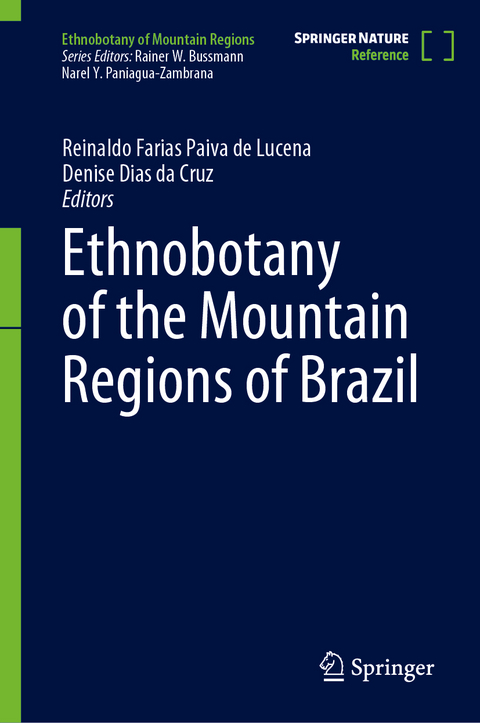
Ethnobotany of the Mountain Regions of Brazil
Springer International Publishing (Verlag)
978-3-030-87250-2 (ISBN)
The field (and thus the market) of ethnobotany and ethnopharmacology has grown considerably in recent years. Student interest is on the rise, attendance at professional conferences has grown steadily, and the number of professionals calling themselves ethnobotanists has increased significantly (the various societies (Society for Economic Botany, International Society of Ethnopharmacology, Society of Ethnobiology, International Society for Ethnobiology, and many regional and national societies in the field currently have thousands of members). Growth has been most robust in BRIC countries.
The objective of this new MRW on Ethnobotany of Mountain Regions is to take advantage of the increasing international interest and scholarship in the field of mountain research. We anticipate including the best and latest research on a full range of descriptive, methodological, theoretical, and applied research on the most important plants for each region. Each contribution will be scientifically rigorous and contribute to the overall field of study.
lt;b>Dr. Reinaldo Farias Paiva de LucenaInstitute: Federal University of Paraíba Street Address: Universidade Federal da Paraíba. Centro de Ciências Exatas e da Natureza. Departamento de Sistemática e Ecologia. Cidade Universitária , João Pessoa, Paraíba, Brasil. CEP: 58051-900Email: rlucena@dse.ufpb.br
Dra. Denise Dias da CruzInstitute: Federal University of Paraíba Street Address: Universidade Federal da Paraíba. Centro de Ciências Exatas e da Natureza. Departamento de Sistemática e Ecologia. Cidade Universitária , João Pessoa, Paraíba, Brasil. CEP: 58051-900Email: denidcruz@dse.ufpb.br
Part I Regions: Caatinga Ecosystem: A Geo-environmental and Human Perspective;- Part II: Plant Uses and and Ecosystems: What Sociocultural Factors Most Influence Knowledge and Use of Food Plants? A Qualitative Review;- Use of Wood by Local Populations in the Caatinga - Ne Do Brasil Ecosystem and Changes in the Landscape;- Environmental Factors Modulate Plant Selection by Local Human Populations in Dry Tropical Forests;- Traditional Knowledge Management Framework (TKMF) of Pesticide Plants in Rural Communities in the State of Piauí, Northeastern Brazil;- Brazilian Endemic Cacti and Their Potential as an Alternative to Commercial Hydrocolloids;- Cactus Snacks and Cookies: Unconventional Food Plants in Baking Processes;- Ethnobotanical Uses and Anatomical Structure of Medicinal Plants of the Caatinga;- Part III: Plant Profiles: Acanthospermum hispidum DC. Asteraceae;- Agave sisalana Perrine Agavaceae;- Amaranthus cruentus L.Amaranthaceae;- etc.
| Erscheinungsdatum | 11.07.2023 |
|---|---|
| Reihe/Serie | Ethnobotany of Mountain Regions |
| Zusatzinfo | XXVIII, 796 p. 380 illus., 376 illus. in color. |
| Verlagsort | Cham |
| Sprache | englisch |
| Maße | 155 x 235 mm |
| Gewicht | 1391 g |
| Themenwelt | Naturwissenschaften ► Biologie ► Botanik |
| Schlagworte | biogeography • Breeding • Development • ethnobotany • Pathology • Systematics • Taxonomy |
| ISBN-10 | 3-030-87250-5 / 3030872505 |
| ISBN-13 | 978-3-030-87250-2 / 9783030872502 |
| Zustand | Neuware |
| Informationen gemäß Produktsicherheitsverordnung (GPSR) | |
| Haben Sie eine Frage zum Produkt? |
aus dem Bereich


